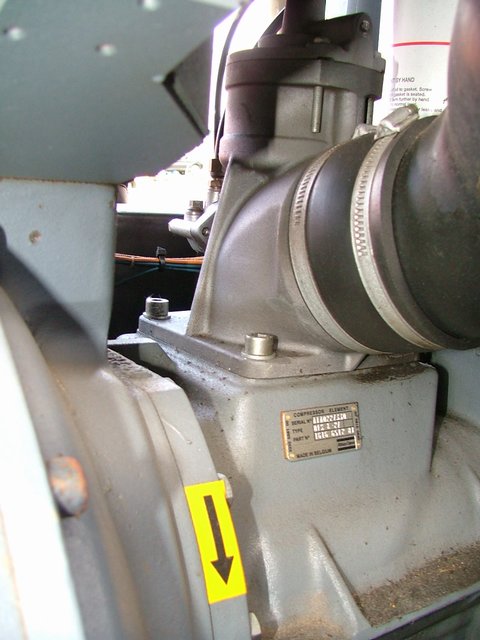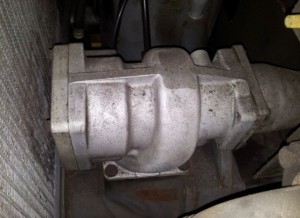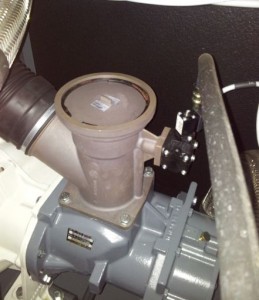The air compressor inlet valve regulates the capacity of your rotary screw compressor.
The air compressor unloader valve regulates the amount of air that is sucked in by your air compressor. By opening and closing the air intake, the capacity of a rotary screw compressor is regulated.
This valve is also commonly called an inlet valve, intake valve, unloader and unload valve.
(There is another type of valve also called 'unloader valve', which is completely different and which can be found on small reciprocating piston compressors.)
When the desired pressure is reached, the compressor will go in 'unload' mode: the unloader valve will almost completely close the air intake of the compressor. This way, no more are can be sucked in and compressed, so the compressor is basically just turning around, doing nothing. At the same time, the pressure that is still inside compressor element is released through a small hole (you will hear a sssssshhh sound).
 Unloader/inlet valve mounted on top of compressor element (portable compressor)
Unloader/inlet valve mounted on top of compressor element (portable compressor)
Note that there is always a small hole in the air compressor unloader valve, so it will never close 100%. This is to make sure there will be enough oil flowing for lubrication and cooling.
Most unloaders are of the LOAD/UNLOAD type. Which means they are either completely open (compressor loaded) or completely closed (compressor unloaded). In unloaded state, when the unloader is closed, the unit will consume about 30% of it's nominal power. T
here is another type: CONTINUOUS or MODULATING.
This way the compressor can work at any point between 0 and 100%. It is not often used in stationary compressors (it's not the most economical way of regulation). But it is often seen in portable diesel engine driven compressors.
Example of inlet/unloader valve... this one is from a 15 year old rotary screw compressor (Atlas Copco GA37)
 Inlet valve on old stationary rotary screw compressor.
Inlet valve on old stationary rotary screw compressor.
Another example... this is the inlet valve of a brand new screw compressor (Atlas Copco GA30).
 Brand new inlet valve, with small control valve and solenoid on the right.
Brand new inlet valve, with small control valve and solenoid on the right.
